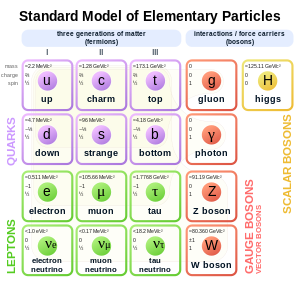Quarks are sub-atomic particles in which create such as neutrons and protons. These are what basically creates atoms. Being able to control something like these could give us unlimited power. Sadly they are too small and most are still theoretical. Most quarks decay into there anti-particle (ex. an unstable Electron decays into a Positron (or Anti-Electron),which happens to be involved with Anti-Matter! Here are all of the quarks, theoretical and proven,along with some other particles:
 |
| http://en.wikipedia.org/wiki/Quark Quarks |
If you have any questions or comments please leave them below, and if you desire a topic involving physics of any kind, please leave in via box.
No comments:
Post a Comment